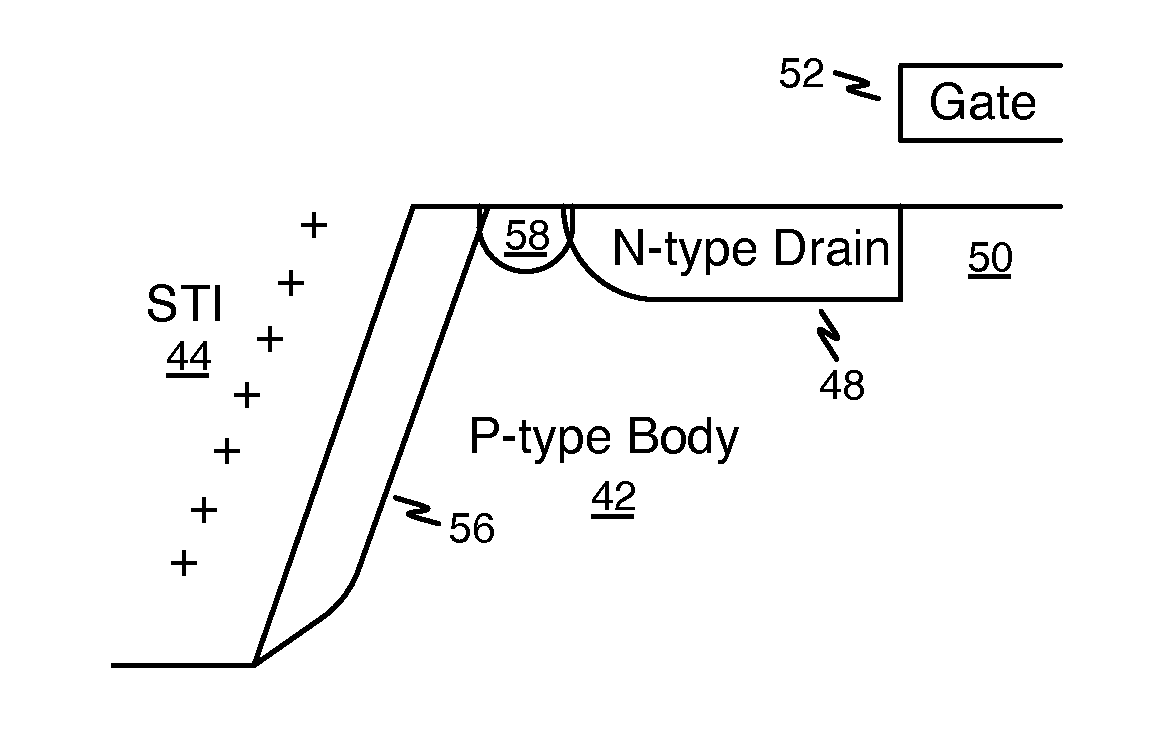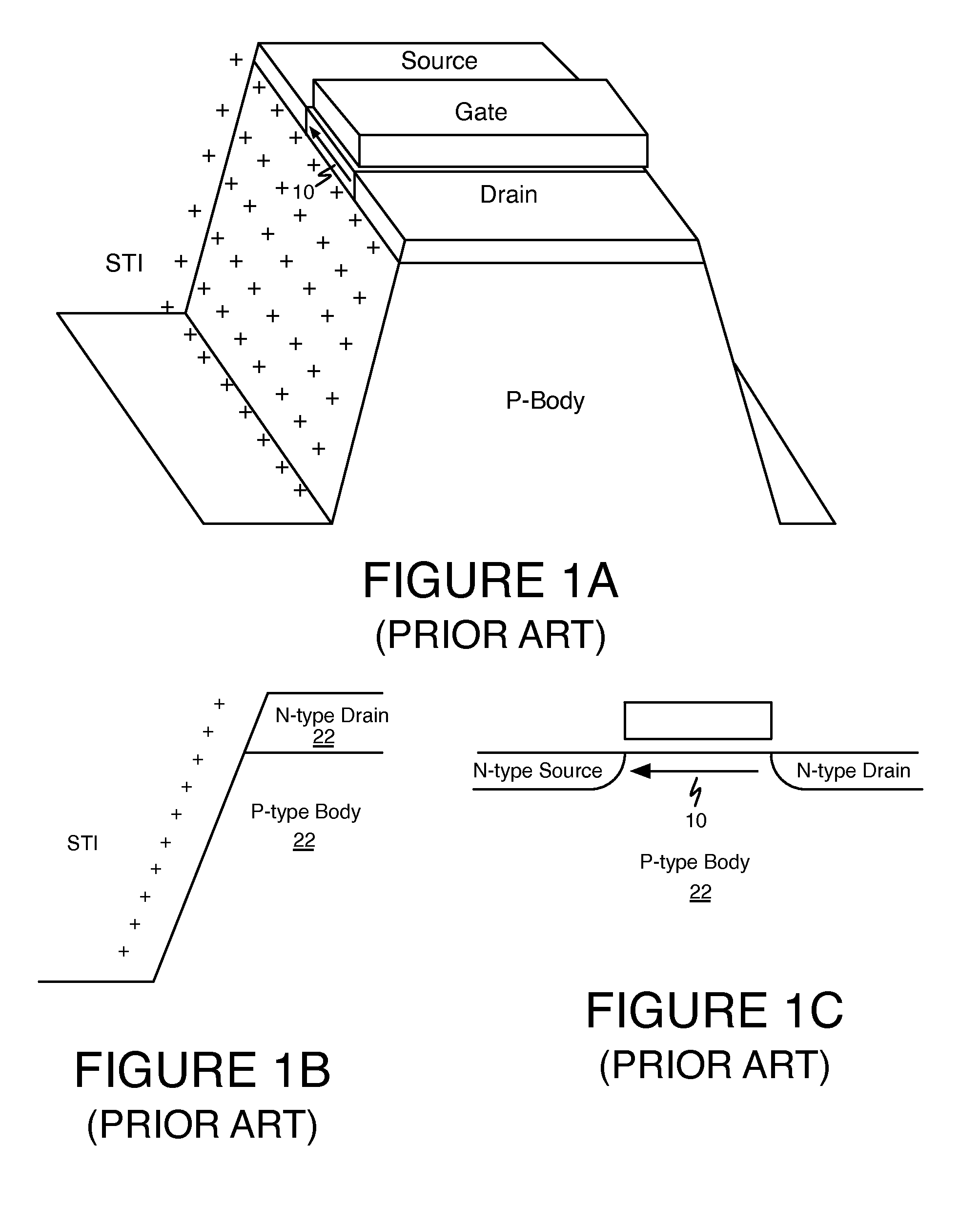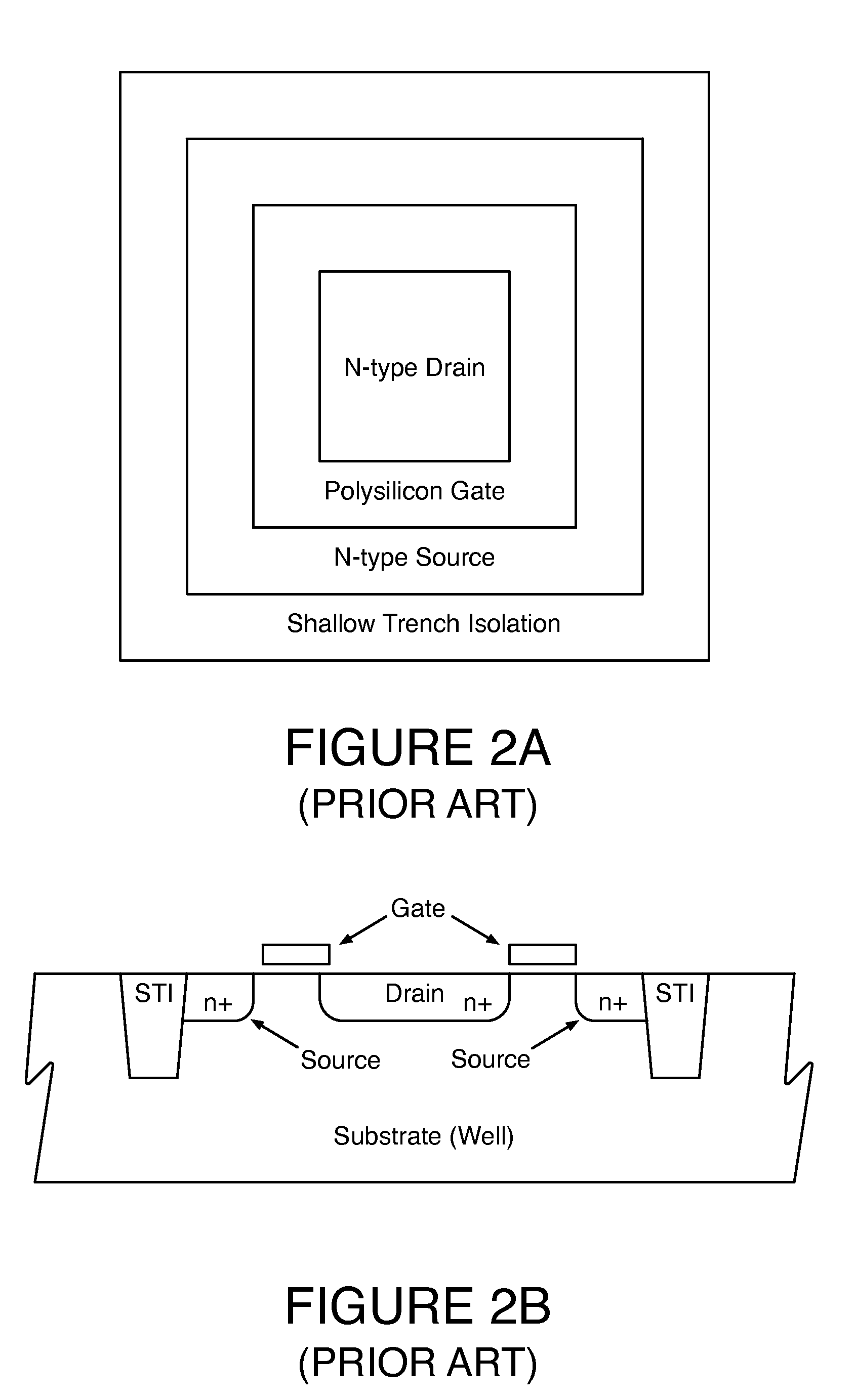Tid hardened mos transistors and fabrication process
a technology of mos transistor and fabrication process, which is applied in the field ofmos technology and radiation hardened mos transistor, can solve the problems of limiting the usable lifetime of nmos transistors in radiation environments, nmos devices showing large parasitic drain-to-source leakage, and devices being especially vulnerable to this failure mechanism
- Summary
- Abstract
- Description
- Claims
- Application Information
AI Technical Summary
Benefits of technology
Problems solved by technology
Method used
Image
Examples
Embodiment Construction
[0025]Persons of ordinary skill in the art will realize that the following description of the present invention is illustrative only and not in any way limiting. Other embodiments of the invention will readily suggest themselves to such skilled persons.
[0026]Referring now to FIGS. 3A, 3B, and 3C, diagrams depict an illustrative embodiment of the present invention. According to this aspect of the present invention, the source and drain nodes of the NMOS transistor are electrically isolated from the trench sidewall by a lateral diode. This diode is junction engineered to provide isolation after exposure to ionizing radiation while maintaining the full junction breakdown performance of the original radiation-sensitive layout.
[0027]FIG. 3A is a three-dimensional drawing of the structure of a transistor 20 fabricated according to one aspect of the present invention. FIG. 3B is a cross-sectional view of the drain side of transistor 20 taken in a direction parallel to the channel. FIG. 3C ...
PUM
 Login to View More
Login to View More Abstract
Description
Claims
Application Information
 Login to View More
Login to View More - R&D
- Intellectual Property
- Life Sciences
- Materials
- Tech Scout
- Unparalleled Data Quality
- Higher Quality Content
- 60% Fewer Hallucinations
Browse by: Latest US Patents, China's latest patents, Technical Efficacy Thesaurus, Application Domain, Technology Topic, Popular Technical Reports.
© 2025 PatSnap. All rights reserved.Legal|Privacy policy|Modern Slavery Act Transparency Statement|Sitemap|About US| Contact US: help@patsnap.com



